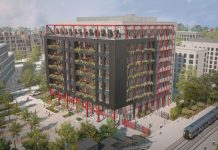A report by CBRE into secondhand office space in the regions has concluded that as occupiers demand better quality and more sustainable offices, some of the poorest secondhand offices are becoming functionally obsolete and economically redundant.
Based on regional data, including information collected from Bristol that spans the last 12 years, the research examines historical trends for supply and demand of secondhand office space.
The report states that since 2008 there has been a rapid increase in the quantity of secondhand space available. One of the reasons for this is that secondhand office space has traditionally been occupied by smaller, medium sized businesses and since the downturn these businesses have taken a more cautious approach leading to less movement of these types of occupiers.
The report highlights a growing imbalance between take-up and availability of secondhand office space. While take-up levels of secondhand space has remained fairly constant, availability has markedly increased, particularly between 2008 and 2009. There is also an imbalance when looking at supply of both prime and secondhand stock. In Bristol there is just under five years of secondhand stock available while less than two years of new stock.
Commenting on the report Philip Morton, Head of Agency and Development at CBRE in Bristol said: “Bristol is in the same situation as many other regional centres in that the amount of available secondhand office space has increased rapidly over recent years.”
He added: “There is now a three tier market of secondhand accommodation: high, medium and poor. High is distinguished by being newly refurbished with a good specification and an average parking ratio. Medium is more compromised on what specification can be included in the building: it could be refurbished or not with a less than average car parking ratio. Poor is heavily compromised in terms of specification, non refurbished and little to no car parking.”
The report concludes that landlords and developers need to either ‘reposition’ their assets from their current tier, to as high a tier as possible to meet today’s occupiers’ needs. Alternatively they need to consider a change of use for those properties in the poorest category. This happened in the mid to late ‘90s when iconic buildings such as the Bristol & West Tower was brought for a mixed-use scheme of hotel, residential and retail uses. It looks like the property cycle is about to repeat itself. The new National Planning Policy Framework should streamline this process for developers and landlords.



















